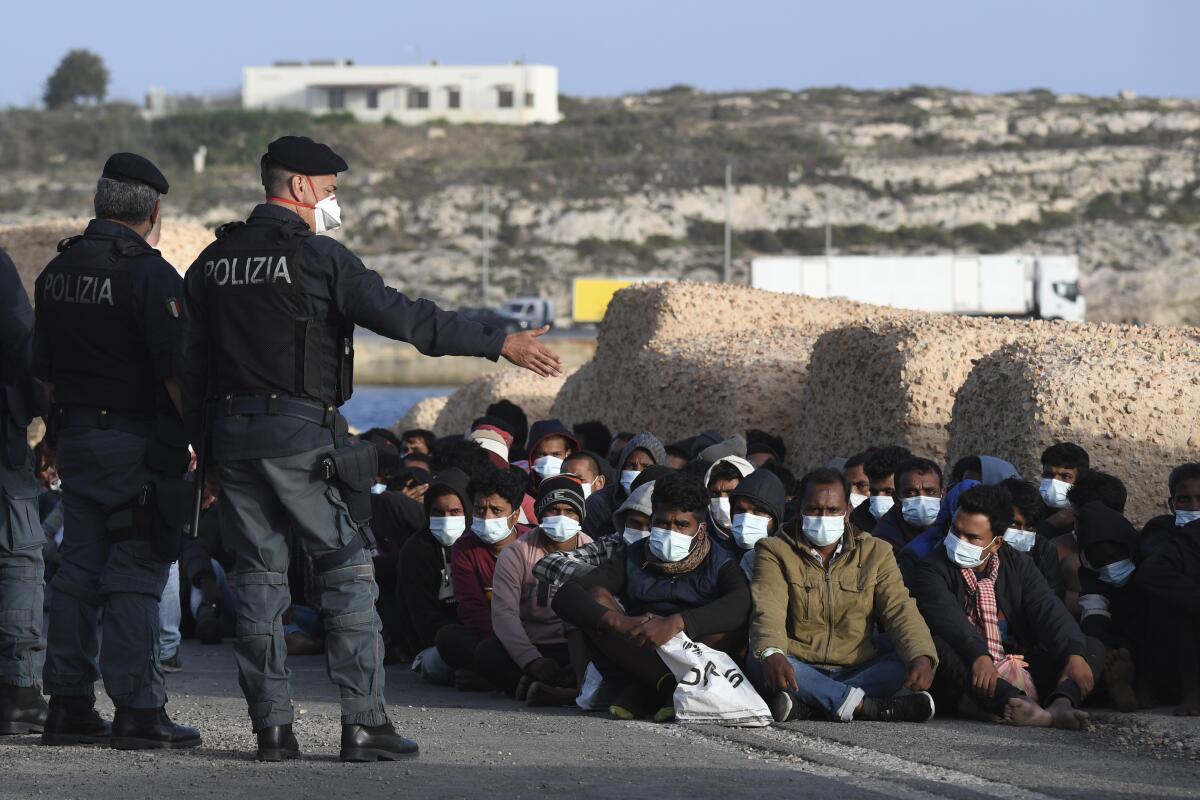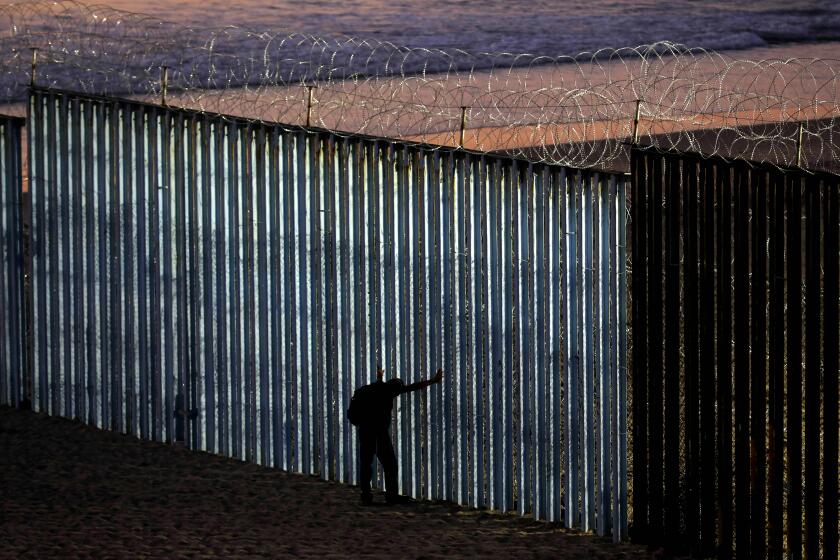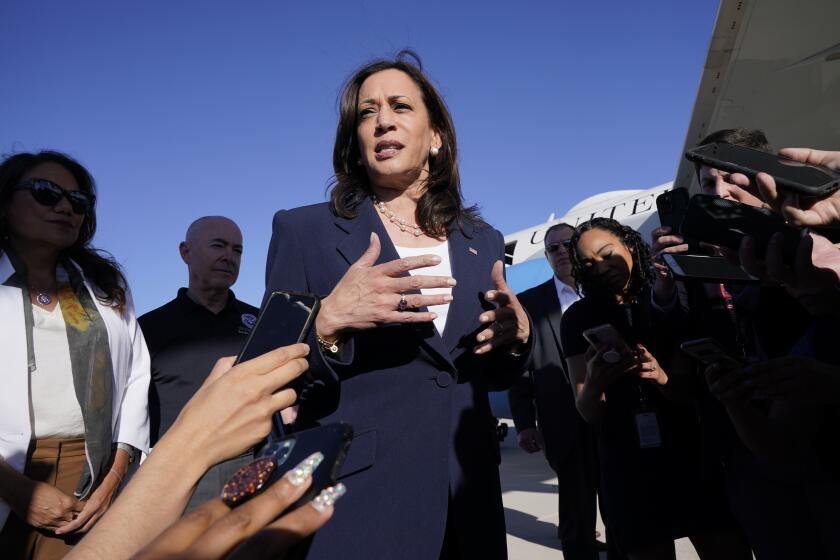Op-Ed: The world’s definition of ‘refugee’ shortchanges economic migrants

- Share via
The U.S. and Europe are facing growing migration crises and humanitarian emergencies at overwhelmed borders — raising the question of how to legally authorize the flow of people who do not count as refugees.
People are regularly forced to leave their home countries for various reasons. It’s not just war, torture or persecution based on political views, race or religion that force people around the world to seek better lives elsewhere. Yet only those who fall in those narrow categories can apply for asylum as a route to living in the United States and many European countries.
Our current system for refugees fails to recognize that economic desperation is often the cause that drives people across borders. These migrants enter a veritable black hole of international law, quite literally a no man’s — or no person’s — land without immigration pathways for people experiencing economic desperation, no matter how acute. The world’s framework for accepting refugees needs to be overhauled to give more of these migrants viable futures.
The immigration debate poses a moral dilemma for America.
Our current system is stuck in how the world defined “refugee” following World War II. In those post-war years, Europe was a mess. Years of war and violence quelled fascism — but also left upwards of 60 million people displaced from their homes.
The 1951 Refugee Convention was hashed out between most of the world’s countries to address the post-war humanitarian catastrophe and organize settlement for the millions who had been uprooted. It established in international law the principle of “non-refoulement,” meaning that no receiving country would return a refugee to the country where they faced persecution.
In 1967, those terms were expanded to remove geographic and time limits on non-refoulement, making universal the definition of refugee as someone fleeing religious, political, racial and/or national persecution who therefore had the right to apply for asylum in a foreign country.
Yet one notable omission from the definition remains a sticking point today: recognizing the economic drivers of displacement. People fleeing poverty to improve their economic situation count as migrants, not refugees. While migrants may access certain services sometimes provided by governments in the countries where they find themselves, including healthcare and food assistance, they are not guaranteed these resources by any kind of right. Refugees, by contrast, are entitled to certain rights. Perhaps most importantly, they have a legal right to reside in the host country, so they don’t live in fear of deportation.
This approach has its roots in the Universal Declaration of Human Rights of 1945, the pillar of international human rights, which states that “everyone has the right to seek and to enjoy in other countries asylum from persecution.” The declaration also suggests that displaced people would eventually return to their home countries, expressed in Article 13’s statement that everyone has the right both to leave his country and to return.
But not all migrants can rebuild lives at home. Receiving countries often recognize this reality for refugees by allowing them to apply for citizenship after a short-term residence. The problem is that people who are forced from their home countries for economic reasons do not typically get such privileges from receiving countries.
A fear and hatred of foreigners is deeply rooted in U.S. history. One way to challenge this xenophobia is to focus on real people and real stories.
With rapid climate change and increasing economic upheaval (some brought on by policies such as the North American Free Trade Agreement, which impoverished millions in rural Mexico), tens of millions of vulnerable people will be forced to cross borders to survive.
Preparing for this unavoidable reality will require a significant move among nations to amend the 1951 Refugee Convention.
A good first step came in 2018 with the Global Compact for Migration, orchestrated by the United Nations and endorsed by 152 countries including Britain and most of the nations in the European Union. The agreement seeks to establish guidelines for the safe, orderly and humane flow of people, helping to shape policy in the places where migrants end up.
But the compact has limitations. It exists as a series of suggestions that countries may adopt or reject, even if they have signed on. And some nations — including the United States, Italy and Australia — all of which have migrants reaching their borders driven by dire economic conditions — refused to agree to the compact.
So, what else can be done?
No matter what President Biden does, Republicans will attack his policies as “open borders.”
Participating countries could give the Global Compact more force by making it more like a treaty, having governments sign and ratify it.
A more forceful option would be to change the definition of who counts as a refugee by amending the existing Refugee Convention to include people fleeing poverty. This would require ratification by the parties to the treaty, a difficult path particularly because there are political leaders around the world who would like to see a more closed definition of refugee, not a more open one. Still, even the attempt to amend these standards would make a necessary statement that the current system fails too many migrants and needs reform.
Meanwhile, individual countries should make their immigration systems more flexible and accommodating. Ultimately they decide which refugees and migrants they will permit across their borders, and what services and residency options they will provide.
If the world is to live up to its promise of enabling movement for all people in accord with basic human rights, its definition of “refugee” and its treatment of migrants have to change.
Anthony Pahnke is an associate professor of international relations at San Francisco State University.
More to Read
A cure for the common opinion
Get thought-provoking perspectives with our weekly newsletter.
You may occasionally receive promotional content from the Los Angeles Times.













